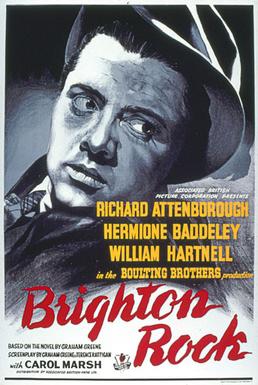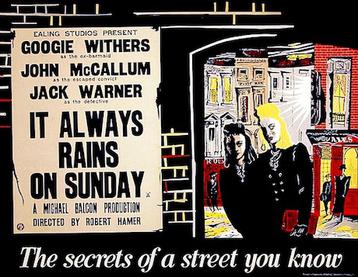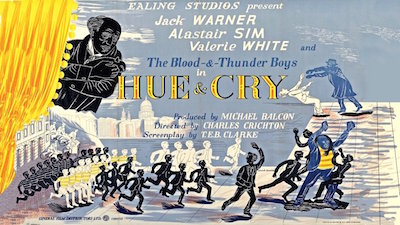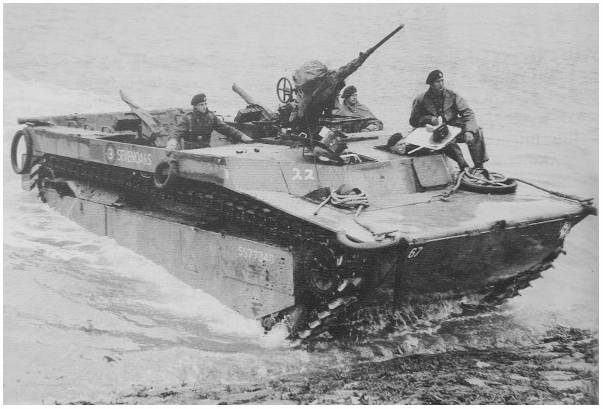Television
During 10 February-11 March the BBC Television Service is temporarily suspended due to the national fuel crisis. On 9 November the memorial service is broadcast from the Cenotaph for the first time. On 20 November the Royal Wedding is watched by an estimated 400,000 viewers. Adelaide Hall appearing in Variety in Sepia is the first telecording by kinescope
New Programmes
The Care of Your Car is a series about looking after a car. The episodes aired in a 20-minute time-slot. The episodes were; "The Chassis" (26 January 1947),"Steering, Brakes and Tyres" (30 March 1947), "The Engine" (27 April 1947), "More About the Engine" (1 June 1947) and "Electrical Equipment" (4 July 1947).
Iberian Notebook is a television series which debuted 25 September. It is a programme of Iberian music and dancing.
Viewers' Viewpoint is a television series which presents discussions on television programmes with critics and viewers. It is one of the first television programmes about television itself.
Films
Black Memory is a crime drama starring Michael Atkinson, Myra O'Connell and Michael Medwin and directed by Oswald Mitchell. Two debuting actors are Sid James and Jane Arden.
Brighton Rock is a crime drama directed by John Boulting adapted from the 1938 novel Brighton Rock by Graham Greene and adapted by Greene and Terence Rattigan. It stars Richard Attenborough as Pinkie (reprising his breakthrough West End creation of the character), Carol Marsh as Rose, William Hartnell as Dallow and Hermione Baddeley as Ida. It was produced by Roy Boulting through the brothers' production company Charter Film Productions. The film centres on a gang of assorted criminals led by a psychopathic teen-aged hoodlum known as Pinkie. The film's real-life theme was the race-track gangs of the 1930s, which fought public battles with straight razors in their competition to control crime at racecourses in southern England. Pinkie is the strong arm for a small gang that operates at Brighton's race track. After a newspaper reporter named Fred writes a story that gets the gang leader killed by rivals, Pinkie takes over leadership and tracks Fred down, murdering him on an amusement park ride. The police think it a heart attack or suicide. But Pinkie still wants to cover his tracks and gets one of his gang members, Spicer, to take care of the matter. But Spicer accidentally leaves a clue that waitress Rose discovers. So Pinkie murders Spicer. He also courts and marries Rose so she can’t testify against him. But then, with self-appointed amateur sleuth Ida Arnold asking a lot of questions about Fred's murder, and the larger rival gang taking over racetrack racketeering, Pinkie decides he needs to kill Rose, too, before leaving town. So he convinces her that he will soon be caught and go to the gallows, and therefore the two should commit suicide together. Out of love for Pinkie she reluctantly agrees and almost follows through. But a member of Pinkie's gang turns on him and helps the police stop her just in time before Pinkie commits suicide by throwing himself off the pier.

Another crime thriller is Dancing with Crime directed by John Paddy Carstairs, starring Richard Attenborough, Barry K. Barnes and Sheila Sim. The film sees boyhood friends setting out in the world. Ted Peters (Richard Attenborough) becomes a taxi driver and hopes to marry Joy Goodall (Sheila Sim), a pretty chorus girl. Dave Robinson (Bill Rowbotham) seeking easy money, joins a gang which has its headquarters in a suburban palais-de-danse. Ted refuses to join them.
Dual Alibi is a crime drama directed by Alfred Travers and starring Herbert Lom, Phyllis Dixey and Terence De Marney. It was made by British National Films at Elstree Studios. In the film, a French acrobatic act, the de Lisle twins, are hired by a British promoter to perform in his Blackpool show. While working there one of the twins falls in love with a cigarette girl and aspiring singer Penny. After the twins win the French lottery, she steals their ticket with the help of a spivish publicity agent and goes to Paris to claim the prize. The twins follow them to seek revenge.
Dear Murderer is a thriller, directed by Arthur Crabtree for Gainsborough Pictures, and starring Eric Portman and Greta Gynt. The film was well-received for its tautness and ingenuity, with one reviewer noting: "Dear Murderer is a shrewd, semi-psychological thriller with Eric Portman, a well-known menace...being sinister to the height of his bent. The plot is good and chilling."It also received positive notices on its release in the USA.
Lee and Vivien Warren (Portman and Gynt) are trapped in a nightmare marriage. Vivien is despising, devious and habitually unfaithful while Lee is pathologically jealous. On his return from a lengthy business trip to New York, Lee finds several cards addressed to Vivien and determines to kill her latest lover, Richard Fenton (Dennis Price). He confronts Fenton, who admits to his affair with Vivien, and persuades him to end the relationship by writing her a farewell letter. He then kills Fenton, and stages the scene to look like a suicide, believing he has committed the perfect crime as the letter which Fenton had just written at his dictation has all the appearance of a suicide note. His scheme goes awry when he discovers immediately after the fact that Vivien and Fenton had in fact broken up some time before, and Fenton had been humouring him by writing the note. He is guilt-stricken at having killed Fenton needlessly, and realises that any suggestion of suicide on Fenton's part in despair over Vivien will now seem absurd to the police. When he discovers that Vivien now has a new beau, Jimmy Martin (Maxwell Reed), he takes the opportunity to frame Martin for the crime. While he arranges matters so that all the evidence points to Martin, the policeman in charge of the case has his doubts about the case but is unable to catch Lee out. Vivien begs her husband to intercede on Martin's behalf, promising to remain faithful in the future if he can devise a way to save Martin from the gallows without incriminating himself. Lee comes up with what he thinks will be the perfect solution to save Martin and thus keep Vivien, but then discovers he may have underestimated her cunning.
Black Narcissus is a Technicolor film by the British writer-producer-director team of Michael Powell and Emeric Pressburger, based on the 1939 novel by Rumer Godden. It is a psychological drama about the emotional tensions within a convent of nuns in an isolated valley in the Himalayas, and features Deborah Kerr, Kathleen Byron, Sabu, David Farrar, Flora Robson, Esmond Knight, and Jean Simmons. Black Narcissus has achieved acclaim for its pioneering technical mastery, with the cinematographer Jack Cardiff, shooting in vibrant colour, winning an Academy Award for Best Cinematography and a Golden Globe Award for Best Cinematography, and Alfred Junge winning an Academy Award for Best Art Direction.

The Loves of Joanna Godden is a historical drama film directed by Charles Frend and produced by Michael Balcon. The screenplay was written by H E Bates and Angus McPhail from the novel by Sheila Kaye-Smith. It stars Googie Withers, Jean Kent, John McCallum, Derek Bond, Chips Rafferty and Sonia Holm. The music was composed by Ralph Vaughan Williams. When Joanna Godden's father died, he bequeathed her a farm on the Romney Marsh in Kent. Joanna is determined to run the farm herself. Her neighbour Arthur Alce (John McCallum), laughs at her ambitions, but loves her. Choosing a new shepherd, she allows physical attraction to a man to overcome her judgment as a farmer and her scheme for cross-breeding sheep is unsuccessful. Her wealth gone, she turns to Arthur Alce for help, but not love. That she accepts from Martin Trevor (Derek Bond), a visitor from the world beyond the Marsh. But on the eve of their marriage Martin dies.
A Man About the House is directed by Leslie Arliss. The film is a melodrama, adapted for the screen by J.B. Williams from the 1942 novel of the same name by Francis Brett Young. It was produced by Edward Black and edited by Russell Lloyd, with cinematography by Georges Périnal and music by Nicholas Brodszky. Two impecunious English sisters, Ellen and Agnes Isit (Dulcie Gray and Margaret Johnston), unexpectedly inherit a Neapolitan villa from a deceased uncle and move to Italy to view and sell their property. A local man, Salvatore (Kieron Moore), has since a boy been employed by the deceased uncle becoming major domo and he now manages the villa and its vineyard. Exploring her late uncles' studio, Ellen uncovers a painting of a nude Salvatore as Bacchus. Soon Ellen becomes drawn to the carefree life of the locals and the romantic charisma of Salvatore, while the prudish Agnes resists. During the raucous revelry of the grape-treading festival, Agnes succumbs to her suppressed desire. The pair are quickly married and Salvatore now is master of the estate. Soon, Ellen becomes aware of a change in Salvatore's behaviour towards Agnes. Not long after the marriage, Agnes' health begins to deteriorate and Ellen's suspicions are aroused. She expresses her concerns to a visiting English doctor, Benjamin Dench (Guy Middleton) who is Agnes's former fiancé. Ellen is convinced that Agnes is being poisoned. She enlists Dench's help in trying to prove that Salvatore is slowly murdering her sister with arsenic. The villa once belonged to Salvatore's family and he has long been determined to regain ownership. Having poisoned his employer to inherit he had not anticipated the sisters arrival on the scene. The film culminates in a clifftop struggle between Salvatore and Dench, who beats Salvatore and tells him to leave at once or face the consequences. Ellen and Dench return to the villa to tend the sickened and weak Agnes. Suddenly they learn that Salvatore is dead, having cast himself from the clifftop rather than lose his family property. Ellen and Dench, who have fallen in love, depart together and leave the recovered Agnes who is determined to remain at the villa and to fulfil her dead husbands' wishes restoring the vineyards.
Mine Own Executioner is a psychological thriller drama film starring Burgess Meredith and directed by Anthony Kimmins, and based on the novel of the same name by Nigel Balchin. It was entered into the 1947 Cannes Film Festival. The title is derived from a quotation of John Donne's Devotions, which serves as the motto for the original book. Felix Milne (Meredith) is an overworked psychologist with psychological problems of his own. Molly Lucian has a husband traumatised from having been in a terrible accident, and she needs Milne's help in treating her husband, Adam. Adam is about to become severely schizophrenic. To make matters worse, Felix finds his own home life deteriorating.
The Brothers is a melodrama, starring Patricia Roc and John Laurie, from a novel of the same name by L.A.G. Strong. It is set in the Western Isles of Scotland, and the long and murderous grudge between two clans there, the Macraes and McFarishes. Patricia Roc plays a serving girl, whose arrival to work for the Macraes inflames the conflict and causes an internal power-struggle between two brothers in the Macrae clan (played by Maxwell Reed and Duncan Macrae).
Captain Boycott is a historical drama directed by Frank Launder and starring Stewart Granger, Kathleen Ryan, Mervyn Johns, Alastair Sim and Cecil Parker. Robert Donat makes a cameo appearance as Charles Stuart Parnell. The film covers a period of Irish history known as The Land War, when Irish tenant farmers were being squeezed dry by absentee English landlords. Some resorted to violence to achieve justice, but others, inspired by the Irish statesman Charles Stewart Parnell, adopted a form of passive resistance. The farmers are led by Hugh Davin (Stewart Granger), who, with the help of the local priest, Father McKeogh (Alastair Sim), encourages his fellow tenants to ostracize their land agent, the bombastic Captain Boycott (Cecil Parker). The resultant stand-off attracts international news coverage and will ultimately introduce a new word – to boycott – to the English language.
The Courtneys of Curzon Street is a drama starring Anna Neagle and Michael Wilding. The son of a baronet shocks class-conscious 1900 British society by marrying an Irish servant. The film chronicles 45 years in their lives together and apart. The film is one of the most seen British films of the year.
The End of the River is a drama made in Brazil about a South American Indian boy who leaves the jungle to the city, where he is accused of murder. It was directed by Derek Twist and written by Wolfgang Wilhelm, based on a novel by Desmond Holdridge. The film stars Sabu and Bibi Ferreira. The film was produced by Powell & Pressburger.
Fame is the Spur is a drama directed by Roy Boulting. It stars Michael Redgrave, Rosamund John, Bernard Miles, David Tomlinson, Maurice Denham and Kenneth Griffith. Its plot involves a British politician who rises to power, abandoning on the way his radical views for more conservative ones. It is based on the novel Fame Is the Spur by Howard Spring, which was believed to be based on the career of the Labour Party politician Ramsay MacDonald.
The Foxes of Harrow is an Anglo-American production directed by John M. Stahl. The film stars Rex Harrison, Maureen O'Hara and Richard Haydn. The film was nominated an Academy Award for Best Art Direction (Lyle Wheeler, Maurice Ransford, Thomas Little, Paul S. Fox). In the pre-Civil War New Orleans, roguish Irish gambler Stephen Fox (Rex Harrison) buys his way into society, something he couldn't do in his homeland because he is illegitimate.
Green Fingers is a drama directed by John Harlow and starring Robert Beatty, Carol Raye and Nova Pilbeam. The film's plot involves a young man who discovers that he has what appear to be healing powers.
The Hills of Donegal is drama directed by John Argyle and starring Dinah Sheridan, James Etherington and Moore Marriott. It follows a young Irish woman who abandons a promising career as singer to get married, only to discover that her husband is not the man she thought he was.
Hungry Hill is directed by Brian Desmond Hurst and starring Margaret Lockwood, Dennis Price and Cecil Parker with a screenplay by Terence Young and Daphne du Maurier, from the novel by Daphne du Maurier. A feud is waged between two families in Ireland, the Brodricks and the Donovans, over the sinking of a copper mine in Hungry Hill by Copper John Brodrick. The feud has repercussions down three generations.
It Always Rains on Sunday is a film adaptation of Arthur La Bern's novel of the same name, directed by Robert Hamer. The film has been compared with the Poetic realism movement in French cinema. The film concerns events one Sunday (23 March 1947) in Bethnal Green in the East End of London. Rose Sandigate (Googie Withers) is a former barmaid married to a middle-aged man (Edward Chapman) who has two teenage daughters from a previous marriage. She is a bossy, strident housewife, coping with the difficulties of poverty, near-slum housing and a drab, joyless environment. A former lover, Tommy Swann (John McCallum escapes from prison and is discovered by Rose hiding in the family's shed. He asks her to hide him until nightfall. Rose initially refuses but, clearly still in love with him, eventually allows him to hide in the bedroom. However, it proves extremely difficult to keep the presence of the escapee a secret in such a busy, bustling household. It is Sunday morning and the lunch must be cooked, the girls admonished for their misdemeanours of the previous night and the husband packed off to the pub out of the way. The strain is intolerable and as the day progresses, the police net closes, after a newspaper reporter interrupts them, as Tommy is about to flee, and soon tips off the police. By nightfall her secret is out and a panic-stricken Rose tries to gas herself, while the prisoner is cornered in railway sidings and arrested by the detective inspector (Jack Warner) who has been patiently tracking him. As the film ends, Rose is in hospital recovering, and reconciles with her husband, who then returns alone to their home, under a clear sky.

Jassy is a melodrama, based on a novel by Norah Lofts. It is a Gainsborough melodrama, the only one so far to be made in Technicolor. A fine country estate has just been lost at the roll of a dice, and the Hatton family have to move out as the Helmars take possession. As new landlords, the Helmars then have to face an angry mob of villagers, demanding better working conditions. They are led by Tom, who is mortally wounded by a drunken Helmar. The Hattons have been employing Tom’s wild half-gypsy daughter Jassy as a servant, but sack her when she gets too close to their son Barney. She makes friends with Helmar’s daughter Dilys, who gets her a job as her father’s housekeeper at the big estate. Soon she marries him, but after a riding accident, he becomes violent towards her. A dumb servant-girl Lindy poisons Helmar for his brutality to his wife. Lindy and Jassy are both charged with the crime and found guilty. But the shock has restored Lindy’s power of speech, and she is able to exonerate Jassy, who signs over the estate to Barney, as its rightful owner, and the two of them are reunited.
The Master of Bankdam is a historical film directed by Walter Forde from the novel, The Crowthers of Bankdam, by Thomas Armstrong. It stars Anne Crawford, Dennis Price, Tom Walls, Stephen Murray, Linden Travers and David Tomlinson. Two generations of brothers struggle for control of the family business in 19th-century Yorkshire.
The Ghosts of Berkeley Square is a comedy film, directed by Vernon Sewell and starring Robert Morley and Felix Aylmer. The film is an adaptation of the novel No Nightingales by Caryl Brahms and S. J. Simon, inspired by the enduring reputation of the property at 50 Berkeley Square as the most haunted house in London. Two 18th century officers, General Burlap (Morley) and Colonel Kelsoe (Aylmer), are desperate to prevent war, so they hatch a plan to capture the Duke of Marlborough and hold him prisoner until the threat of hostilities passes. Unfortunately, while testing the efficacy of the contraption they have designed to entrap the duke, they manage to kill themselves. Their stupidity incurs the wrath of Queen Anne in the afterlife, and as punishment they are condemned to haunt the Berkeley Square house until such time as a British monarch crosses the threshold of the property. Things get off to a rocky start when the ghosts of Burlap and Kelsoe blame each other for the fiasco, quarrel, and refuse to speak to each other for 66 years. Once they have resolved their differences, they set about trying to engineer the required royal visit. Over the decades they interact with the succession of different occupants of the house, but never manage to lure a monarch to enter. As the years pass, the house becomes variously the home of a French-run bordello; an Indian rajah complete with harem; the home of the PT Barnum theatre: a Boer War soldiers' hospital and a Great War officers' club. Their time in purgatory eventually comes to an end when Berkeley Square is bombed during a zeppelin raid and Queen Mary comes to visit the damaged properties, allowing the pair finally to take their place in the afterlife.
Holiday Camp is a comedy directed by Ken Annakin, starring Jack Warner, Jimmy Hanley, Kathleen Harrison and Dennis Price. It documents a working-class London family's annual visit to a summer holiday camp. The film is a kaleidoscope of various lives at play by the sea, in a Butlin's holiday camp. These include a pregnant young girl, a group of gamblers, and a murderer seeking his next victim.
Hue and Cry is a comedy directed by Charles Crichton and starring Alastair Sim, Harry Fowler and Joan Dowling. London forms the backdrop of a crime-gangster plot which revolves around a working-class children's street culture and children's secret clubs.

An Ideal Husband, also known as Oscar Wilde's An Ideal Husband, is a Technicolor adaptation of the play by Oscar Wilde. It was made by London Film Productions and distributed by British Lion Films and Twentieth Century-Fox Film Corporation. It was produced and directed by Alexander Korda from a screenplay by Lajos Bíró from Wilde's play. The film stars Paulette Goddard, Michael Wilding, Diana Wynyard, Hugh Williams, C. Aubrey Smith, Glynis Johns and Constance Collier. The plot sees a mysterious lady attempts to blackmail a respected politician into giving a speech in parliament that supports her interests.
Just William's Luck is a comedy film directed by Val Guest and starring William Graham, Garry Marsh and Jane Welsh. The film is based on the Just William series of books by Richmal Crompton. In the film, William and his gang, The Outlaws, investigate a haunted house.
Meet Me at Dawn is a romantic comedy directed by Peter Creswell and Thornton Freeland and starring William Eythe, Stanley Holloway and Hazel Court. A very skilled pistol shot hires himself out to fight duels in early twentieth century Paris.






Quoted
The theme of the programme is gardening and is called 'How Does Your Garden Grow?'
